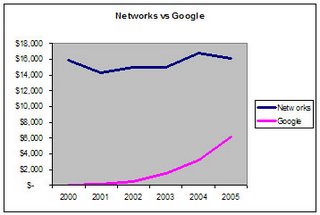CBS Cuts Deal with Affiliates
This case shows that unique content is critical in devising a convergence strategy. CBS has it and is keeping peace with the natives while they make the transition. The big question .. Will it last long?
Tracks trends in traditional television ad sales and the impact of new technologies, new competition.
About Me
Proven senior level executive with over 25 years of leading turnarounds and startups of software companies in media, finance, energy and business intelligence. See more at Linked In. |
But a trend that is emerging is that many many of the traditional TV ad buys include an on-line component. On-line continues to grab share --- 12%, from 10% last year.
Advertisers realize that on-line advertising can be more targeted. Will we arrive at a point where TV advertising is nothing but a means to drive people to a web site? My good friend Buford Smith says that this is the only way a small advertiser should use TV ads.
With the latest Harris poll showing that 77% of adults are on-line for an average of 9 hours per week, this trend should continue. Smart TV ad sales will continue to combine their offers. Proving that the ads work is much more tangible!
And that's good for a media company's stock. Media General expects revenues to rise 14% to 16% this year, as their internet division is growing.


The purposes of this blog are:
From time to time, I will relate some lesser-known facts from our experience (protecting the confidentiality of past customers), and forecast the likelihood of success of various tactics.
As one VC said to me, "You can usually forecast the future. The question is When?"